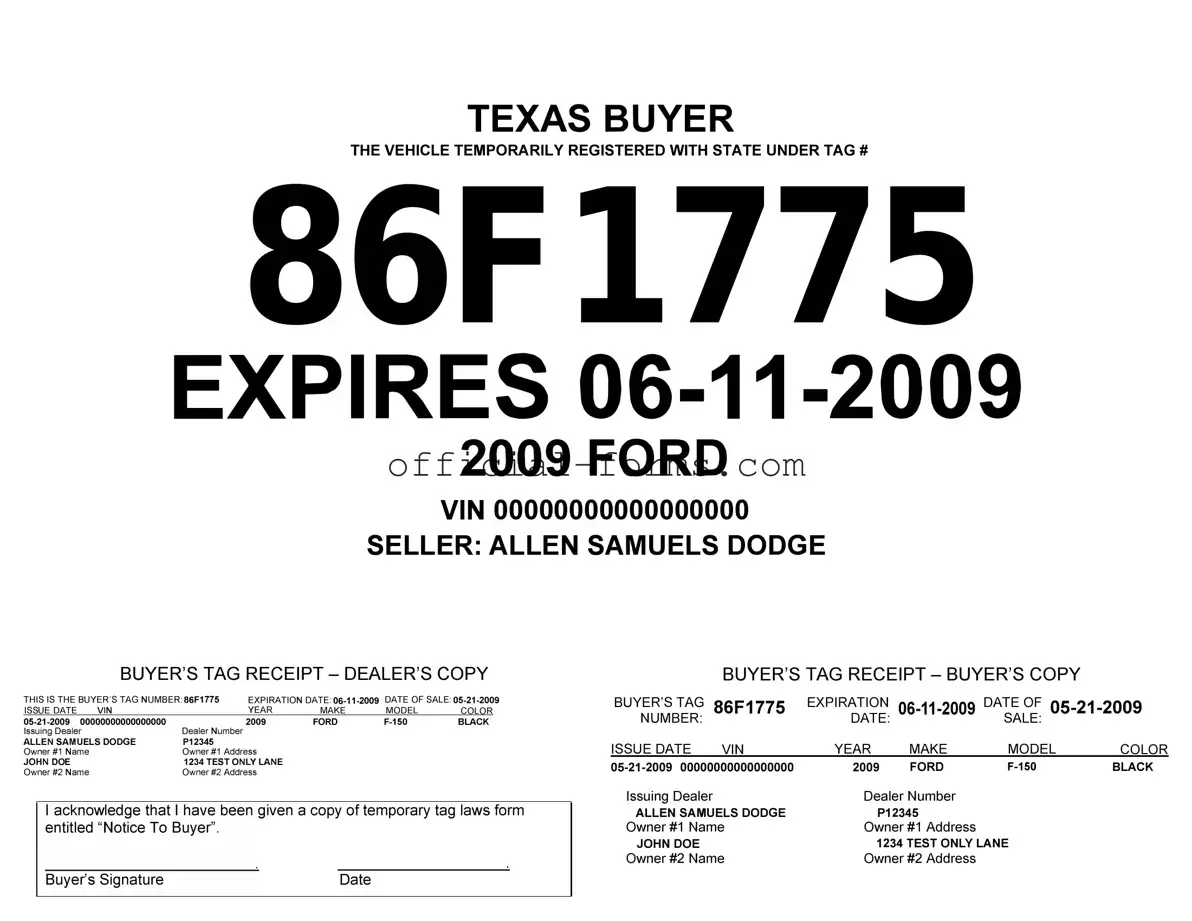Blank Texas Temporary Tag Form
The Texas Temporary Tag form is a document that allows vehicle owners to legally operate their vehicles while waiting for permanent registration. This form provides a temporary license plate, ensuring compliance with state laws during the registration process. Understanding how to properly fill out and use this form is essential for Texas residents looking to navigate vehicle registration smoothly.
Open My Texas Temporary Tag Now
